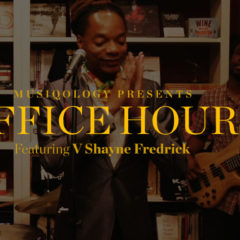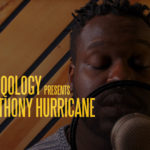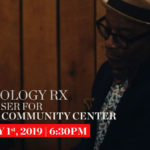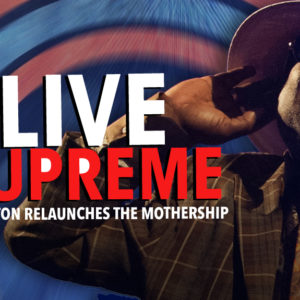Nothing New is MusiQology’s latest recurring series. Written by Penn PhD candidate Ben DuPriest, this collection of essays debates the utility and danger of proclaiming music “new” (or “old”) within a larger historical and political frame. With a focus on contemporary recordings labeled “jazz” for a variety of reasons, DuPriest unpacks the politics of that label and an ongoing debate over the utility of new-ness.

Pianist Robert Glasper’s most recent release, ArtScience, is, in the parlance of our times, a stylistic mashup. Glasper sits at the helm of a community of jazz musicians who explore the music’s ability to cohabitate with pop, hip hop, and R&B, frequently serving as go-to cameo musicians when non-jazz wants to tap a jazz aesthetic. This may seem trite or unremarkable considering the long sonic history that these genres share. But, despite the industrial lionization of cross-over artistry, the truth is that these are musics whose stylistic codes and generic boundaries have long been institutionally safe-guarded by purists and ‘oldheads.’ What’s more, Glasper and his colleagues merge jazz with R&B, hip hop, and pop more skillfully and to a more (pardon the term) organic extent than ever before. Consistently incorporating an exceptionally healthy dose of soulfully sung or rapped verse, programmed beats, and pop forms, this is the proverbial twisted knife in the side of isolationist jazz purity and authenticated hip hop sonic-hyper-reality.
With the enduring popularity of his Black Radio Experiments, Glasper boasts dual citizenship in both the jazz and neo-soul music communities. As a collaborator, he has previously worked with Kanye West, Jay Z, and Kendrick Lamar (among many others). He recently made his second appearance on NPR’s “Tiny Desk Concert” series, this time backing up the rapper Common alongside Bilal in a performance that was recorded at the White House. Regardless of your feelings about Common, or the White House, you should probably watch it and take in the phenomenal circumstances of that performance while you can (but feel free to put Common’s use of respectability politics in conversation with any number of prevailing political dispositions…).
At the risk of lauding these musicians for creating in jazz some kind of ‘out-reach-to-the-kids’ program, it does seem that, insomuch as their collective creative consciousness reflects a tacit thumb on the pulse of current pop sensibility, they do open the door to a much wider listenership for jazz. As such, intentionally or not, they represent a particularly vogue–and populist–statement of ‘where jazz is today.’ At the same time, apropos of the present discussion, which explores the ambiguities and contentions of what is ‘new jazz,’ this a newness ever rooted in a discursive relationship with that which has come before.
For example, it addition to ArtScience, 2016 also saw the release of another (arguably more rewarding) project for Glasper: Everything’s Beautiful, a compulsively inventive collaboration with an array of artists, including the album’s primary composer, none other than Miles Davis himself. Everything’s Beautiful is an abstract expression of Miles’s music–a controversial proposition, but one that is deftly executed, particularly reflecting Glasper’s unique (to the jazz world) talent for working with samples and incorporating concrete sounds into his own sonic landscape.
To the casual listener, Miles’s presence on the album may seem limited, but this is because it is neither a tribute album nor a remix album. In the liner notes, Glasper states “this should be more about showing Miles’s inspiration with new work and being open to how different people use that inspiration.” The songs are largely built around small seeds from Miles’s recordings: single beats or feels, re-worked melodies, even just samples of Miles talking. Glasper goes on: “Some people show gratitude by trying to do the same thing over again. To me the best way to show gratitude is to show how you’ve been inspired by someone. ‘Hey man, I wrote this song because of you!’ Not, ‘Hey I’m playing your tune.’” Jazz has long employed a system of versioning and covering, an economy of musical remembrance predicated on the re-working of old standards within the bounds of aural recognition. With Everything’s Beautiful, Glasper and his collaborators leave this system behind, re-engaging with the music’s most celebrated and iconic figure without the functional conventions of the genre’s historico-creative mechanics.
Glasper’s most recent, ArtScience, is, in his own words, a “musical mutt… the product of intense mixing,” crafted with intentional disregard for a specific genre or vibe. The album features prominent use of R&B sounds, trap textures, and pop vocality (replete with auto-tune), but never surrenders the trio’s improvisatory acumen. The opening track, “This is Not Fear,” opens on free group improvisation, briefly coalescing on a modal theme before giving way to a more repetitive beat underlying sampled overdubs. The transition is marked by Glasper’s voice, which is heard speaking the words: “The reality is, my people have given the world so many styles of music, you know, so many different styles, so why should I just confine myself to one? We want to explore them all.”
ArtScience represents a couple of notable departures for Glasper. First, while past albums have featured an A-list of vocal cameos ranging from Erykah Badu and Jill Scott to Mos Def and Lupe Fiasco, vocal duties on ArtScience are shared by Glasper and bassist Derrick Hodge. There are no cameos on this album. Hodge and Glasper’s voices are up front on tracks like “Thinkin’ Bout You” and “Day to Day,” consistently drenched in vocal processing effects. As such, if we want to judge ArtScience as an R&B album–which we could–it doesn’t quite stand up against the group’s past work (and not because of the auto-tune, I don’t hate). It isn’t a stretch to say that Glasper and Hodge are two of the most gifted instrumentalists working today, but their singing simply comes across as uninspiring in the wake of the likes of Scott, Bilal, and Badu.
Second, and on a more positive note, there are simply more non-jazz sounds on ArtScience than on the group’s previous albums, and they are incorporated in increasingly remarkable ways. Several tracks achieve and sustain danceable grooves crafted completely around pop song forms. As such, any instrumental experimentation requires particularly tactful incorporation. On extended tracks like “No One Like You,” solos are traded between Glasper and Saxophonist Casey Benjamin, bookended by groove-driven choruses that are essentially tight R&B slow jams. “Tell me a Bedtime Story” is also a stand-out in this respect, with heavily processed vocal verses broken up by extended group improvisation. At times, Hodge and drummer Mark Colenburg are able to significantly expand on the seemingly restrictive textures that the more pop-driven project demands; “In My Mind” reflects Colenburg’s most intricate work, but doesn’t compromise the overarching textures of the album.
“Artscience also reflects Glasper’s own personal version of ‘throwback,’ and it isn’t to any of Miles’ iconoclastic periods. Recently admitting that his favorite era of pop music is the 1980s, Glasper doesn’t hide the heavy influence of the music of his childhood. Tracks like “No One Like You” employ rhythmic textures that evoke The Police and Steely Dan (both of which Glasper has referenced in press), and the album’s final track, “Human,” is a straight-up cover of The Human League’s 1986 electropop chart-topper. It can be argued that, despite Glasper’s neo-soul pedigree, electropop informs the album’s pop sensibility more than anything else. It’s worth noting that electropop is a music that has enjoyed a number of its own revivals over the years, since its inception in the late 70s. So while Glasper’s use of pop music engenders his jazz with a certain forward thinking ethos, it is a pop music that is already couched in the past. It’s also worth noting that by claiming 80s electropop, Glasper may also eschew the potential for his music to be too much forced under the purview of R&B and hip hop, genres that are themselves historically entangled with monolithic hegemonies of categorization.
It’s in these generic balancing acts that ArtScience shines. Glasper and his colleagues seem to tack increasingly left of right on the hip hop à R&B à jazz spectrum, no doubt leaving some jazz purists behind. Despite seeming to cater to the pop(ulist)-sensibilities of their presumably widening fan-base, though, a dedicated listening reveals that these artists continue to root their work in the tradition of virtuosic play. Perhaps the hardest work here is in the extent to which they expand on that virtuosity by deftly incorporating and engaging with new (and old) sounds and ideas, without being overly beholden to any one sonic tradition. Both of these albums reflect an unconventional approach to the music’s relationship to its past, and its use of that past in the creation of the new, Auto-Tune be damned.


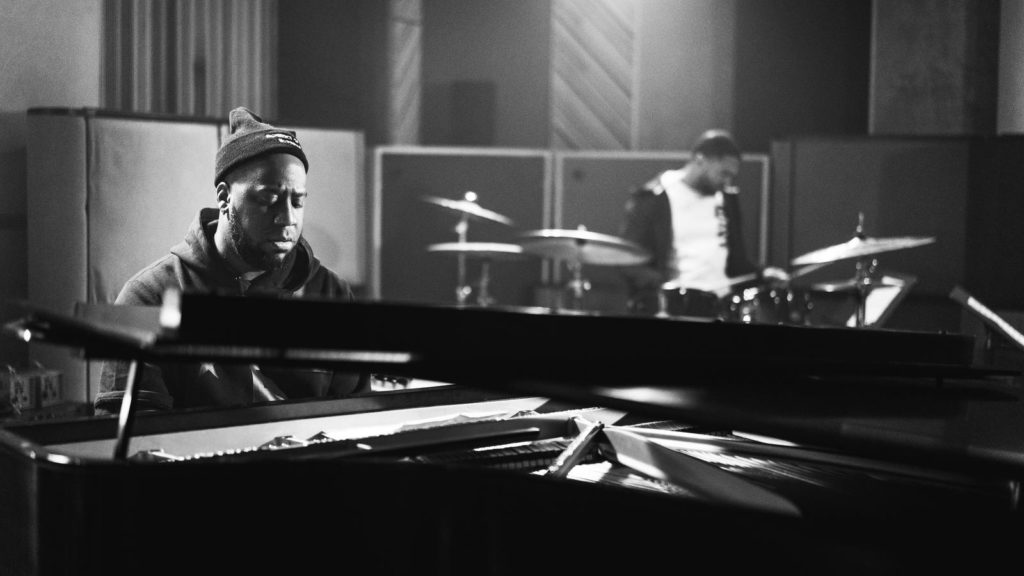
 Share On Facebook
Share On Facebook Tweet It
Tweet It


